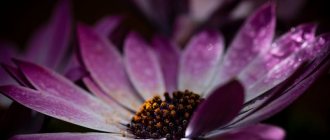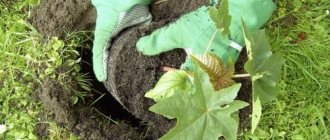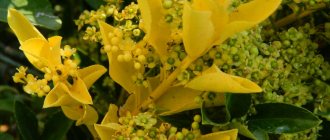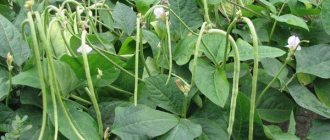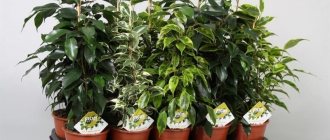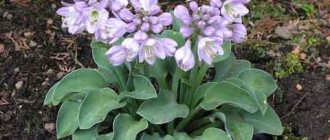Description of the plant
Heliotrope has green or dark green leaves on short petioles. The foliage is wrinkled with light fluff. Some varieties of the culture can be seen in the Caucasus and regions of Central Asia. Most often it grows on mountain slopes. Feels good in weedy places where the soil is quite comfortable. Lush inflorescences reminiscent of lilac are located at the top of the branch. Most varieties have a dark blue or purple hue, but there are also plants with snow-white and pale blue corollas. Flowering lasts about 4 weeks.
Heliotrope has been cultivated since the 18th century.
Heliotrope varieties
Breeders have developed many diverse and interesting varieties. Let's look at the most common ones.
Peruvian heliotrope
This variety is a plant about 60 cm high with leathery dark green leaves. The inflorescences are blue or dark lilac, collected in a panicle. Flowering stops when frosts occur.
Peruvian heliotrope
Heliotrope stem-encompassing
Short type. Found in South America. The variety is also actively grown in eastern Australia. Reaches 15-30 cm in height. Heliotrope stem-encompassing has tubular flowers 5-6 mm long. The flower spikes become longer as the fruit matures. The inflorescences may be purple, blue or pink with a yellowish throat. Flowering continues for a long time - from late spring to early autumn. The fruit consists of a pair of small seeds, which separate from each other when ripe.
Heliotrope Marine and Mini Marine
The height of the bushes can be from 30 to 40 cm. The leaves have a light green tint, the inflorescences have a blue-violet tone.
Heliotrope Marine
Black Beauty
This variety grows up to 40 cm. It has flowers of a dark purple hue.
Fragrant Delight
The height of the plant is about 37 cm. The core has a soft lavender hue, which darkens at the edges.
Heliotrope Sea Breeze
The variety is presented with very beautiful flowers and look like light water ripples. The petals have a rich blue or lilac color. The bush grows up to 40 cm. This variety has a strong smell and looks good near borders.
Heliotrope Sea Breeze
Heliotrope Odysseus
The variety is a bush with small fragrant flowers, which reaches a height of about 30 cm. It blooms for a very long time in the summer. Suitable for use in landscaping balconies and carpet flower beds.
Heliotrope pubescent
This variety cannot be used in gardening or other areas due to its toxicity. The plant is characterized by a tall stem with a height of 20 to 50 cm, oval or round leaves. The dark green foliage is heavily pubescent. The flowers are small with curls at the top.
Heliotrope Kurasawa
This variety belongs to the dwarf varieties. The flowers have a pale blue hue and are collected in oblong inflorescences. Kurasawa heliotrope is actively used to decorate borders and flower bed edges.
Reproduction
Heliotrope is propagated in two ways: seeds or cuttings.
Using cuttings
Cuttings are carried out in winter - in January-February, so that the bushes have time to go through all stages of development before planting.
Shoots 10 cm long are cut from the mother plant and planted in prepared containers for rooting. Before this, the cuttings are treated with root. They create a greenhouse effect by covering the plantings with a bag or plastic cups.
Propagation by cuttings
At this time, the shoots need additional lighting. The duration of daylight hours should not be less than 10 hours. To create greater splendor, it is recommended to pinch the bush.
From seeds
Before planting seeds, the soil should be steamed with boiling water to sterilize it. Then sowing is carried out in the following steps:
- The moist substrate is poured into pots and compacted.
- The seeds are evenly distributed among the containers and lightly sprinkled with a soil layer of 1-2 mm.
- Water the seedlings with small doses of water.
- They create a greenhouse effect - cover with film and put in a warm place with a temperature of 18-20°C.
- When seedlings appear, remove the greenhouse and place the containers on the windowsill.
On a note! Seeds germinate within 7-25 days. If after 23 days the seedlings have not appeared, then it is advisable to repeat the sowing.
Heliotrope is calm about the lack of light, but it is still better to place it on illuminated window sills.
After the heliotrope has produced two leaves, each sprout must be planted in separate containers measuring 9*9 cm. It is better to use the same substrate as for sowing. The seedlings need to be watered immediately, and after a couple of weeks it is recommended to apply any fertilizer for the sprouts.
Transplantation to a permanent place
Heliotrope should be planted in open ground in the second half of May - early June. It is dangerous to plant too early, as the plant will die at the first frost. If the soil is not nutritious enough, then rotted manure or humus is placed at the bottom of the hole.
Heliotrope should be planted together with a clod of earth - this way it will recover faster and begin to grow. The interval between flowers is 30-37 cm.
Transplanting heliotrope into the ground
In addition to open flower beds, young plants can be planted in a large pot to create compositions with other flowers. In this case, the container is filled with soil and mineral fertilizer is applied (1 tbsp per 5 liters of soil) for indoor or balcony plants. They look like granules. Such fertilizers take a long time to dissolve and supply the soil with nutrients, so one fertilizing per season is enough.
If heliotrope is combined with phlox, then it should be planted in this way: three heliotrope and five phlox are placed in a container with a diameter of 40 cm. There is no need to compact the plants too much.
Planting in open ground
Produced when the required temperature is established in the region. More often the plant is planted in a greenhouse, or under a film cover.
When to plant
Seedlings are planted at the end of May, at the beginning of June. If you are replanting in a greenhouse, you can do it earlier. Much depends on the climate and temperature fluctuations. Plants can be planted earlier if the weather permits.
Soil requirements
The substrate is a mixture of clay, sand and peat. If there is a lot of sand in the soil, then add clay and peat, if on the contrary, then add sand.
Planting scheme
It is advisable to adhere to the following algorithm of actions:
- Prepare the soil in advance, water it abundantly, and then loosen it.
- Form a hole of shallow depth to accommodate the roots of the plant.
- Plant and sprinkle the root system with soil.
- The next day, fertilize with mineral or organic fertilizer.
Heliotrope care
Landing location
Since heliotrope grows in a warm, humid climate, it needs a lot of light for full development and abundant flowering. It is also important to consider that the plant does not tolerate direct sunlight, so in the summer you should take care of the presence of shade.
The recommended planting location is the eastern or western part of the plot or apartment. If there is little sunlight, then the flowering period of heliotrope quickly decreases, the shoots become elongated, and growth slows down. As a result, the flower loses its decorative properties.
The soil
Heliotrope needs loose soil that allows moisture and oxygen to pass through well.
When planting at home, you should use a universal soil or substrate prepared independently from turf and leaf soil, humus, peat and sand.
Heliotrope in a pot
A drainage layer of expanded clay, pebbles and crushed stone is placed at the bottom of the container.
Watering
The plant is watered depending on weather conditions. In extreme heat - more often and more abundantly, at other times - moderately. After each watering, it is advisable to loosen the soil. Don't forget to clear the ground of weeds.
On a note! Mulching with sawdust or dry grass helps reduce watering and weeding.
Wintering
In open ground, heliotrope is grown as an annual plant, since in winter it dies from frost. Before frost begins, the heliotrope is removed from the flowerbed and the soil is dug up well. In winter, the flower can be kept indoors at a temperature of 16-18°C. The heliotrope is dug up along with the soil and transplanted into a pot. It is necessary to provide rare watering and diffused light. At the end of winter, the mother plant is used to obtain cuttings.
Top dressing
You can start feeding heliotrope already at the stage of growing seedlings. After planting in open ground, it is advisable to apply fertilizer every 2 weeks. It is recommended to add nutritional complexes in liquid form. Fertilizing should be carried out throughout the entire flowering period.
Collecting seeds
In the climate of central Russia, heliotrope seeds do not always have time to ripen. Therefore, it is better to purchase high-quality seed material in a specialized store.
If in your region the fruit of the plant ripens completely, then you can wait until it dries and turns black. After this, it is removed and the seeds are removed, and then they are laid out to dry in a well-ventilated area. Dried grains are placed in linen bags or paper envelopes. It is recommended to store seeds in a dry, warm place.
Heliotrope seeds
Heliotrope Sea Breeze growing and photo of flowers
Adonis adonis flower description and cultivation
In contrast to the “Marina” variety, the “Sea Breeze” heliotrope hardly extends from the ground more than 40-45 cm, its inflorescences are larger - up to 12 cm in diameter, the duration and abundance of flowering are impressive: the bush retains a lush blue “cap” with June to October. At the same time, it blooms earlier, in comparison with “Marin”: already at the end of the 2nd month from the moment of sowing. For this reason, practicing gardeners often sow “Sea Breeze” in mid or late April. If you grow “Sea Breeze” from seeds in an apartment, you can sow in February, and then by the time flowering begins you will have a very large and lush bush, which, however, can easily form into a small tree.
Heliotrope “Sea Breeze” loves heat very much, so the seedlings must be heated from below if the room is cool. The air temperature near the containers should not fall below 20 degrees, while it is advisable to keep the containers themselves shaded, not allowing direct sunlight to fall to the ground. Jet watering is allowed, but the water must be warm and settled. When shoots appear (usually this happens on days 18-20), the air temperature is raised to 22 degrees.
Picking the “Sea Breeze” and its subsequent transplanting to a flowerbed is carried out so that a distance of 30 cm is maintained between the bushes, and each seedling is buried 1.5-2 cm. Organic fertilizers must be introduced into the soil, which can be replaced with ordinary compost: it will strengthen the branching of the bush and increase the amount of foliage on it.
In addition, it is necessary to constantly and abundantly water the “Sea Breeze”: it loves moisture very much, but it should not linger in the soil. Therefore, often practicing gardeners, after watering, loosen the soil near the bush, at the same time giving it the shape of a hill. During flowering, complex liquid fertilizers are added to the water, but this cannot be done more than 2 times a month.
Sea Breeze heliotrope requires frequent pinching and should be started when the plant is 3-4 weeks old. The upper parts of the side shoots are removed so that the bush does not stretch upward, but to the sides. If necessary, you can eliminate some side shoots completely if you want to get small trees with a lush crown. You can create a “Sea Breeze” in this way up to 2 times a month.
Each variety of heliotrope has its own characteristics when grown from seeds. Of course, you can only work according to a general algorithm suitable for all varieties, but observing individual nuances allows you to get the maximum result from each specific bush.
Heliotrope in landscape design
In landscape design, semi-shrub varieties are the most popular. Airy lush inflorescences perfectly decorate lawns and gazebos. Low-growing varieties are used for planting next to borders or coniferous trees. Tall varieties are acquired as a background.
In pots and original flowerpots, heliotrope will decorate the terrace, balcony or entrance to the house.
The culture goes well with rose bushes, coleus, rudbeckias or begonias.
Petunias or Chernobrivtsa would be appropriate as the bottom row in a complex planting.
Among gardeners, the most favorite varieties are European, stem-bearing and Peruvian. They are popular due to their long flowering and resistance to cold.
Decorating stairs with heliotrope
Benefits and harms
In addition to decorating the site, heliotrope flowers are used in perfumery.
Some varieties contain toxic substances - alkaloids, and the seeds - heliotropine or lasiocarpine. When they enter the body, they paralyze the central nervous system of an animal or person. Dangerous varieties of heliotrope are not cultivated in gardens.
Parts of certain plant varieties are used in folk medicine. For example, infusions from the dry herb of European heliotrope are taken against helminths or for kidney stones.
Preparations based on heliotrope are used to treat wounds and give baths for lichen.
Finely ground leaves are applied to tumors and warts. It is important to consult your doctor before starting treatment.
Possible diseases and pests and their control
In general, heliotrope is quite resistant to various diseases and pests, but sometimes it can be affected by aphids, whiteflies and spider mites. To combat them, the plant is treated with an insecticide, and sometimes re-treatment is required after a week. Experienced gardeners most often use Actellik.
Important! In order to prevent possible damage by insects, it is better to treat heliotrope shrubs with insecticides in early spring and autumn.
Among the diseases, rot and rust are dangerous for heliotrope.
Gray rot
Brownish spots, covered with gray fluff, begin to appear on the leaves, which over time begin to turn black due to the presence of pathogens on them. Affected parts of the plant should be immediately removed and burned, as this fungal disease can spread simply with the wind. After this, the remaining plant is treated with either copper sulfate or copper oxychloride.
In order to prevent this unpleasant disease, you should avoid thickening of plantings and the formation of air stagnation, and also do not overdo it with nitrogen fertilizers
Heliotrope grown in the country will certainly become your pride
Rust
At the beginning of the growing season, in spring, orange spots-pads appear on the leaves. If left untreated, the branches begin to become deformed and the leaves themselves begin to fade. Treatment consists of immediate destruction of the affected parts of the plant and treatment with a solution of Bordeaux mixture or colloidal sulfur.
The heliotrope color will not leave anyone indifferent, therefore, by planting this plant on your site, you can not only decorate the flowerbed, but also get an incomparable fragrance for the whole summer - the plant will smell as soon as its inflorescences begin to bloom. In addition, this magical shrub will definitely bring harmony and happiness to the house.
